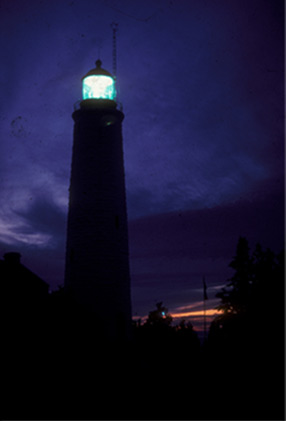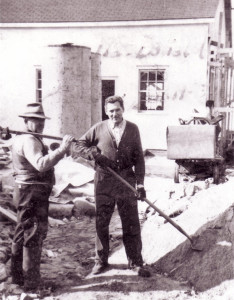Demands for the establishment of navigational aids along the Canadian shores of Lake Huron and Georgian Bay were increasing and could no longer be ignored. The government embarked on a highly ambitious project to construct a series of limestone lighthouses that would light Lake Huron from Point Clark to Christian Island on Georgian Bay.
Construction of the Isle of Coves became a massive undertaking. Having little means of obtaining detailed information the about the site, contractor John Brown had to be guided solely by poorly made maps and charts that “conveyed only a faint idea of the place” The facts were often inaccurate and contained no information concerning the “difficulties and uncertainties he has experienced and doubtless must still further have to content against” during construction of the lighthouse in this remote wilderness area. The original contract price of £3,500 which was to consist of a light tower and adjacent keepers dwelling, escalated rapidly. By the spring of 1857, with financial losses escalating, John Brown in an effort to fulfill the contract was forced to petition Governor General Sir Edmund Walker Head for additional funds. The money Brown believed was necessary to “save him from ruinous loss.”
Construction began in the summer of 1855 with the site of the tower being marked “by squaring a small tree” and by mid August, a construction crew of 16 men which consisted of a foreman, 4 stone masons, 3 stone cutters, 8 labourers and a horse were busy working at their various trades. It was not until the late autumn of 1857, that the stone work was completed.
Delays in the delivery of the lantern room and the light mechanism from France prevented the light from being completed. It was not until late summer 1858 when a crew of French technicians under the direction of A. de St. Aubin arrived and assembled the magnificent twelve-sided polygonal prefabricated lantern room and Fresnel lens mechanism atop the natural grey limestone tower.
In the spring of 1858, George Collins, was appointed the first lightkeeper at the Isle of Coves, at an annual salary of $435.00.
“The light was first displayed on the night of the 30th of Octr. and given in charge of keeper Mr. Collins with orders to continue it until the close of navigation.”
In a letter dated November 2, 1858, engineer William Scott describes the lighting apparatus then gives his thoughts and impressions while he watches the light illuminate the dark night sky for the first time:
“This light is the Lenticular Flash light, revolving on its axis every 10 minutes, but producing the Flash or wave of light every 30 seconds or twice in one minute. The effect from a distance is Grand beyond description as it seems to gather together, rolling itself up into the dark cloudy night and then bursting out into a brilliant flame that illuminates the whole horizon, and cannot be better illustrated, that by the sudden appearance of a Brilliant sun breaking out of a dark rolling cloud.”





